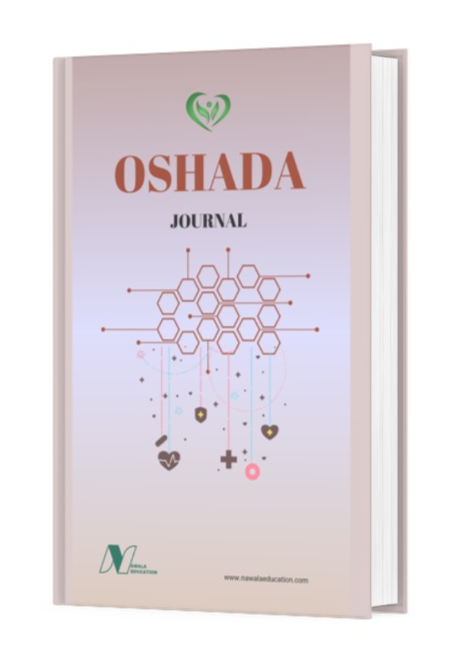Adolescent Reproductive Health: The Role Of Sex Education In Raising Awareness
DOI:
https://doi.org/10.62872/9awqef55Keywords:
First Period of Labor, Medical Technology, Microcontroller, Nipple Stimulation, Time EfficiencyAbstract
The first stage of labor often takes a long time and causes discomfort for the mother, so methods are needed to accelerate it. This study aims to evaluate the effectiveness of microcontroller-based nipple stimulation in accelerating the labor process by stimulating the release of the hormone oxytocin which increases uterine contractions and accelerates cervical opening. Microcontroller technology is used to ensure the stimulation is done automatically and measured according to the mother's physiological needs. This study involved two groups, namely the group that received stimulation and the control group that did not receive stimulation. The results showed that the stimulated group experienced shorter labor times than the control group and were less likely to require medical interventions such as induction with drugs. Close monitoring is still required to ensure safety, especially regarding the risk of uterine hyperstimulation that may affect the condition of the mother and fetus. Further research is needed to test the long-term effectiveness and safety of this method before it is widely applied in obstetric practice. Based on the total library, 600 were identified and as many as 100 additional articles were identified. A total of 630 studies failed to meet the inclusion criteria and 70 articles were read in their entirety, so that as many as 11 publications were used as references. Microcontroller-based nipple stimulation offers an innovative solution that can improve the efficiency of labor while providing a better quality of health care.
Downloads
References
Agustin Mahardika Hariyadi. (2024). Peran Orang Tua dalam Pemenuhan Kebutuhan Informasi Kesehatan Reproduksi pada Remaja. SEHATMAS: Jurnal Ilmiah Kesehatan Masyarakat, 3(1), 151–160. https://doi.org/10.55123/sehatmas.v3i1.2826
Alkornia, S. (2023). Program Pendidikan Kesehatan Reproduksi Anak Usia Dini Dalam Meningkatkan Keterampilan Komunikasi Orang Tua. Learning Community : Jurnal Pendidikan Luar Sekolah, 7(1), 7. https://doi.org/10.19184/jlc.v7i1.38665
Ani, & Sudirman. (2022). Upaya Edukasi Kesehatan Reproduksi Kepada Anak Usia Remaja Di Sekolah Menengah Atas Swasta Army Putra Makassar. AJAD : Jurnal Pengabdian Kepada Masyarakat, 2(1), 40–47. https://doi.org/10.35870/ajad.v2i1.29
Ariasih, Rr. A., & Sabilla, M. (2020). Pengetahuan dan Pengalaman Wanita Pekerja Seks dalam Pencegahan Infeksi Menular Seksual di Panti Sosial Karya Wanita Mulya Jaya Jakarta. Jurnal Kedokteran Dan Kesehatan, 16(1), 41. https://doi.org/10.24853/jkk.16.1.41-54
Brahmana, I. B. (2023). Penyuluhan Kesehatan Reproduksi pada Remaja Putri dengan Pengenalan Alat Reproduksi Perempuan. Poltekita: Jurnal Pengabdian Masyarakat, 4(2), 555–563. https://doi.org/10.33860/pjpm.v4i2.1834
Braithwaite, S. R., Coulson, G., Keddington, K., & Fincham, F. D. (2014). The Influence of Pornography on Sexual Scripts and Hooking Up Among Emerging Adults in College. Archives of Sexual Behavior, 44(1), 111–123. https://doi.org/10.1007/s10508-014-0351-x
Budiarty, A. (2019). Peran Orangtua dalam Pemberian Pendidikan Seks Sejak Dini bagi Anak Difabel Mental Intelektual terhadap Pencegahan Kekerasan Seksual. https://doi.org/10.31227/osf.io/9h2fb
Cook, S. (2010). Taking account of what young women want from school sex education. Journal of Health Organization and Management, 24(5), 528–533. https://doi.org/10.1108/14777261011070556
Davis, A. C., Carrotte, E. R., Hellard, M. E., & Lim, M. S. C. (2018). What Behaviors Do Young Heterosexual Australians See in Pornography? A Cross-Sectional Study. The Journal of Sex Research, 55(3), 310–319. https://doi.org/10.1080/00224499.2017.1417350
Februanti, S. (2020). IMPLEMENTASI PENDIDIKAN SEKS UNDERWEAR RULES SEBAGAI UPAYA PENCEGAHAN KEKERASAN SEKSUAL DI TASIKMALAYA. Edukasi Masyarakat Sehat Sejahtera (EMaSS) : Jurnal Pengabdian Kepada Masyarakat, 2(1), 38–43. https://doi.org/10.37160/emass.v2i1.469
Garcia-Retamero, R., & Cokely, E. T. (2013). Simple But Powerful Health Messages for Increasing Condom Use in Young Adults. The Journal of Sex Research, 52(1), 30–42. https://doi.org/10.1080/00224499.2013.806647
Gause, N. K., Brown, J. L., Welge, J., & Northern, N. (2018). Meta-analyses of HIV prevention interventions targeting improved partner communication: effects on partner communication and condom use frequency outcomes. Journal of Behavioral Medicine, 41(4), 423–440. https://doi.org/10.1007/s10865-018-9916-9
Hidayati, L., Dainy, N. C., Rohmatullayaly, E. N., & Briawan, D. (2013). Persepsi Remaja Mengenai Kesehatan Reproduksi, Kehamilan dan Pernikahan di Usia Remaja: Studi Kualitatif Pada Siswi SMA Pedesaan dan Perkotaan. Jurnal Kesehatan, 6(1), 58–71. https://doi.org/10.23917/jk.v6i1.5564
Hull, T. H., Hasmi, E., & Widyantoro, N. (2024). “Peer” Educator Initiatives for Adolescent Reproductive Health Projects in Indonesia. Reproductive Health Matters, 12(23), 29–39. https://doi.org/10.1016/s0968-8080(04)23120-2
Ikhwa Sasmitha, & Berlianti, B. (2023). Penguatan Pendidikan Seksual pada Anak dalam Upaya Pencegahan Terjadinya Kekerasan Seksual Anak. ABDISOSHUM: Jurnal Pengabdian Masyarakat Bidang Sosial Dan Humaniora, 2(1), 106–113. https://doi.org/10.55123/abdisoshum.v2i1.1393
Jannah, M., Fitriyani, D., Azahra, F., Ardiansyah, N. E., Az-Zahra, E., Fidiasari, F., ... & Saqifah, H. N. (2024). Optimalisasi Peran Sayur Bayam (Amaranthus spp.) sebagai Asupan Alternatif terhadap Kesehatan Reproduksi Remaja Perempuan pada Mahasiswa Kesehatan Masyarakat Angkatan 2023 Universitas Negeri Semarang. Jurnal Angka, 1(1), 144-161. https://doi.org/10.38165/jk.v14i1.357
Macintyre, A. K.-J., Montero Vega, A. R., & Sagbakken, M. (2015). From disease to desire, pleasure to the pill: A qualitative study of adolescent learning about sexual health and sexuality in Chile. BMC Public Health, 15(1). https://doi.org/10.1186/s12889-015-2253-9
McCarthy, O., Carswell, K., Murray, E., Free, C., Stevenson, F., & Bailey, J. V. (2012). What Young People Want From a Sexual Health Website: Design and Development of Sexunzipped. Journal of Medical Internet Research, 14(5), e127. https://doi.org/10.2196/jmir.2116
Miswanto, M. (2014). Pentingnya pendidikan kesehatan reproduksi dan seksualitas pada remaja. Jurnal Studi Pemuda, 3(2), 111-121. https://doi.org/10.61296/jkbh.v5i3.188
Nisrin, M., Surur, N., Thohirin, A., & Sundari, S. (2024). PENDIDIKAN SEKSUAL: KEBUTUHAN MENDESAK DI TENGAH PERKEMBANGAN TEKNOLOGI DAN INFORMASI. PROGRESIF, 2(2), 44-53. https://doi.org/10.26594/teknologi.v1i1.43
Pandey, P. L., Seale, H., & Razee, H. (2019). Exploring the factors impacting on access and acceptance of sexual and reproductive health services provided by adolescent-friendly health services in Nepal. PLOS ONE, 14(8), e0220855. https://doi.org/10.1371/journal.pone.0220855
Peters, D. H. (2024). Strategies for engaging the private sector in sexual and reproductive health: how effective are they? Health Policy and Planning, 19(suppl_1), i5–i21. https://doi.org/10.1093/heapol/czh041
Pound, P., R. Langford, and R. Campbell. 2016. “What Do Young People Think about Their Schoolbased Sex and Relationship Education? A Qualitative Synthesis of Young People’s Views and Experiences.” BMJ Open 6 (9): e011329. https://doi.org/10.1136/bmjopen-2016-011329
Ropitasari, R. (2024). Evaluasi Program Pendidikan Kesehatan Reproduksi untuk Remaja di Sekolah-sekolah Menengah dalam Mengurangi Angka Kehamilan Usia Dini. Jurnal Ners, 8(2), 1360-1365.
Samkange-Zeeb, F. N., L. Spallek, and H. Zeeb. 2011. “Awareness and Knowledge of Sexually Transmitted Diseases (stds) among School-going Adolescents in Europe: A Systematic Review of Published Literature.” BMC Public Health 11 (1): 727. https://doi.org/10.1186/1471-2458-11-727
Susiana, S. (2020). Peran Pemerintah Daerah dalam Penyelenggaraan Kesehatan Reproduksi (Studi di Provinsi Jawa Tengah dan Provinsi Kalimantan Barat). Jurnal Aspirasi, 7(1), 1–16. https://doi.org/10.22212/aspirasi.v7i1.1084
Svanemyr, J., A. Amin, O. J. Robles, and M. E. Greene. 2014. “Creating an Enabling Environment for Adolescent Sexual and Reproductive Health: A Framework and Promising Approaches.” Journal of Addolescent Health 56 (1): S7–S14. https://doi.org/10.1016/j.jadohealth.2014.09.011
UNESCO. 2018. International Technical Guidance on Sexuality Education. An Evidence-informed Approach. Paris: UNESCO.
Utama, A. N., & Hutahaean, R. M. (2024). Pentingnya Implementasi Pendidikan Seksualitas dalam Upaya Pencegahan Kekerasan Seksual. Sindoro: Cendikia Pendidikan, 6(6), 31-40. https://doi.org/10.53769/jai.v1i3.130
Utami, A. P., Qiftiyah, M., & Wijayanti, E. E. (2019). PELATIHAN PENDIDIKAN SEKSUAL SEBAGAI UPAYA PENCEGAHAN KEKERASAN SEKSUAL PADA ANAK. Jurnal Pengabdian Kepada Masyarakat Wahana Usada, 1(2), 1–8. https://doi.org/10.47859/wuj.v1i2
Wegner, R., Lewis, M. A., Davis, K. C., Neilson, E. C., & Norris, J. (2017). Tactics Young Women Use to Resist Condom Use When a Partner Wants to Use a Condom. The Journal of Sex Research, 55(7), 817–823. https://doi.org/10.1080/00224499.2017.1376305
Downloads
Additional Files
Published
Issue
Section
License
Copyright (c) 2024 Wiwin Rohmawati, Mega Octamelia, Masnila Masnila, Nurlama Siregar (Author)

This work is licensed under a Creative Commons Attribution-ShareAlike 4.0 International License.

This work is licensed under a Creative Commons Attribution-ShareAlike 4.0 International License.











